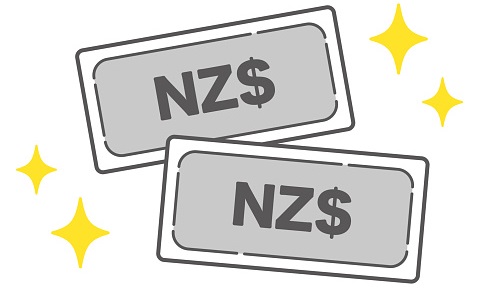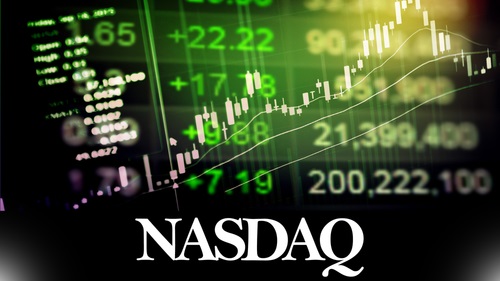US stock markets were subdued during Tuesday’s session, with the S&P 500 ultimately dropping 0.2% and back below the 4200 mark, as market participants digested the latest Conference Board Consumer Confidence report for the month of May and the latest New Home Sales figures. The former was a mixed bag; the headline index remained fairly elevated at 117.2 and the sub-index of household unemployment was strong, but consumers expressed concerns about rising inflation and receding government support. Meanwhile, New Home Sales saw a steeper than expected drop in the month of April, as surging house prices (as seen in the Case Shiller Home price data released earlier in the session, which showed a record 13.9% YoY in March) take their toll on demand. All-in-all, the data does not alter the macro narrative too drastically, as it painted a picture of a US economy recovering well but struggling with high inflation, of which the extent of damage this does to economic activity is as of yet unclear.
US equity index futures are this morning a tad higher, with outperformance seen in tech as yields remain subdued, as was the case during yesterday’s US trading hours, when the Nasdaq 100 was the only major index to close the session in the green. European equities, meanwhile, have slipped back from previous session highs and are now trading in the red, despite downside in European bond yields amid dovish ECB vibes (more on that below). In fairness, European stock markets have been performing well as of late, and many of the major indices have been consistently eking out fresh all-time highs in recent week. Thus, some profit taking is not overly surprising.
Eurozone bond yields are lower across the board this morning, with the German 10-year back under -0.20% having recently been above -0.10% and Italian 10-year yields pulling back further from recent highs above 1.0% to current levels close to 0.9%. Dovish speak from ECB members is being attributed as weighing on bond yields this morning; ECB Governing Council Member Panetta commented that the current conditions the ECB sees today do not justify a reduction in the pace of the QE asset purchases and flagged the risk of a sustained rise in the exchange rate, which could weaken inflationary pressures. ING point out that more hawkish ECB policymakers are likely to contest the more dovish views expressed by the likes of Panetta and ECB President Lagarde in recent days. Moreover, the bank notes that the recent pullback lessens the pressure on the ECB to maintain its accelerated pace of QE bond buying at its meeting next month. Still, markets seem to have interpreted the remarks by Panetta as reducing the likelihood of an ECB QE taper in June; unlike bond yields, this does not see to have weighed too heavily on the euro and EURUSD remains well supported to the north of the 1.2200 level, though is down a modest 0.1% on the session versus the dollar. US treasury yields, by contrast, are flat, with the 10-year remaining subdued in the 1.57% region, roughly 20bps below recent peaks, while the US dollar is a little firmer, with the DXY back in the upper 89.00s, though this is mostly as a result of a slightly weaker euro.
Turning to commodities; crude oil markets have been choppy with front-month WTI futures swinging either side of the $66.00 handle and front-month Brent futures rangebound just under $68.50. Both are a tad lower on the day. Analysts note that crude oil markets continue to balance the bullish narrative of strengthening demand in fast-vaccine rollout countries such as the US, UK and rest of Europe heading into their respective summer driving seasons against the bearish narrative of the prospect of a revival of the US/Iran nuclear deal and a subsequent return to global markets of Iranian supply. A deal has not yet been reached but US negotiators reportedly hope the current ongoing round of talks, which re-started yesterday, will be the final round – markets seem to be expecting a deal, so its official announcement ought not be too negative for crude prices.
Elsewhere, industrial metals are mixed; Chinese steel future prices fell overnight, weighed by changing weather conditions in China that could reportedly hit demand, which adds onto the pressure already exerted on prices by government warnings against price manipulation and speculation, noted analysts at Reuters. This weighed on Dalian iron ore futures, which dropped 1.0% on the session. By contrast, London copper prices are up, with LME copper futures up over 0.5% at the time of writing and closing back in on the $10K per tonne mark again amid Chilean supply concerns; a union representing workers at BHP Group’s Escondida and Spence mines rejected the company’s latest contract offer and is reportedly pushing for members to strike as soon as tomorrow Thursday. According to an analyst in Singapore, “fundamentals remain supportive, with rising concerns over supply disruptions in South America due to labour negotiations and elections… It (copper demand) is still weak, but premiums might have hit a bottom… Previous pullback in prices also invited buying interest from end users’ restocking activities (and) firm contango will also favour traders’ long and carry strategy”. Finally in commodities, spot gold prices are higher and XAUUSD has managed to reclaim the $1900 level for the first time since early January this year, printing highs around $1910. Downside in European bond yields and the ongoing subdued nature of US bond yields are both contributing to gold’s strength, as is the fact that the DXY remains marooned beneath the 90.00 level.
In FX markets, NZD is the star performer in wake of last night’s RBNZ monetary policy decision; the bank held the OCR at 0.25% and left its LSAP (QE) and Funding for Lending Programmes unchanged, as expected, but provided new forecasts for its OCR which was more hawkish than expected. The new forecasts predicted one 25bps hike by the end of Q3 2022, which was already anticipated by markets so not what moved NZD higher, but showed a total of 150bps in hikes (taking rates to 1.75%) by the middle of 2024. This is a more aggressive tightening cycle than markets had been pricing, hence why NZD rose so sharply; NZDUSD reclaimed the 0.7300 handle for the first time since the 25th of February, up roughly 1.2% on the session. AUD is the next best performer in the G10 in sympathy with the kiwi, up about 0.4%, enough to bring AUDUSD to fresh highs on the week of just under 0.7800. Domestic events are also giving the Aussie a hand, with Construction Work Done in Q1 2021 surprising modest to the upside, up 2.4% on the quarter versus forecasts for a 2.2% rise.
Elsewhere, the likes of GBP, CHF, JPY, CAD and NOK are all pretty subdued on the day and are all broadly unchanged versus the dollar. GBPUSD recently rose back above 1.4150 but still remains below yesterday’s near 1.4200 highs, USDCHF is trading within thin ranges either side of 0.8950, with price action looking a little suspicious and perhaps indicative of the SNB acting to put a floor under the currency pair for the time being and USDJPY is trading within recent ranges in the upper 108.00s, having broadly shrugged off a downgrade to the Japanese government’s official economic forecasts. Finally, USDCAD is within recent ranges trading close to 1.2075.
The Day Ahead
There is not much of anything to get excited about today, unfortunately, with the only notable market events being comments from FOMC member and Vice Chair for Supervision Quarles speaking at 1500BST and then again at 2000BST, a 5-year US government bond auction at 1800BST and the release of weekly EIA inventory data at 1530BST.




